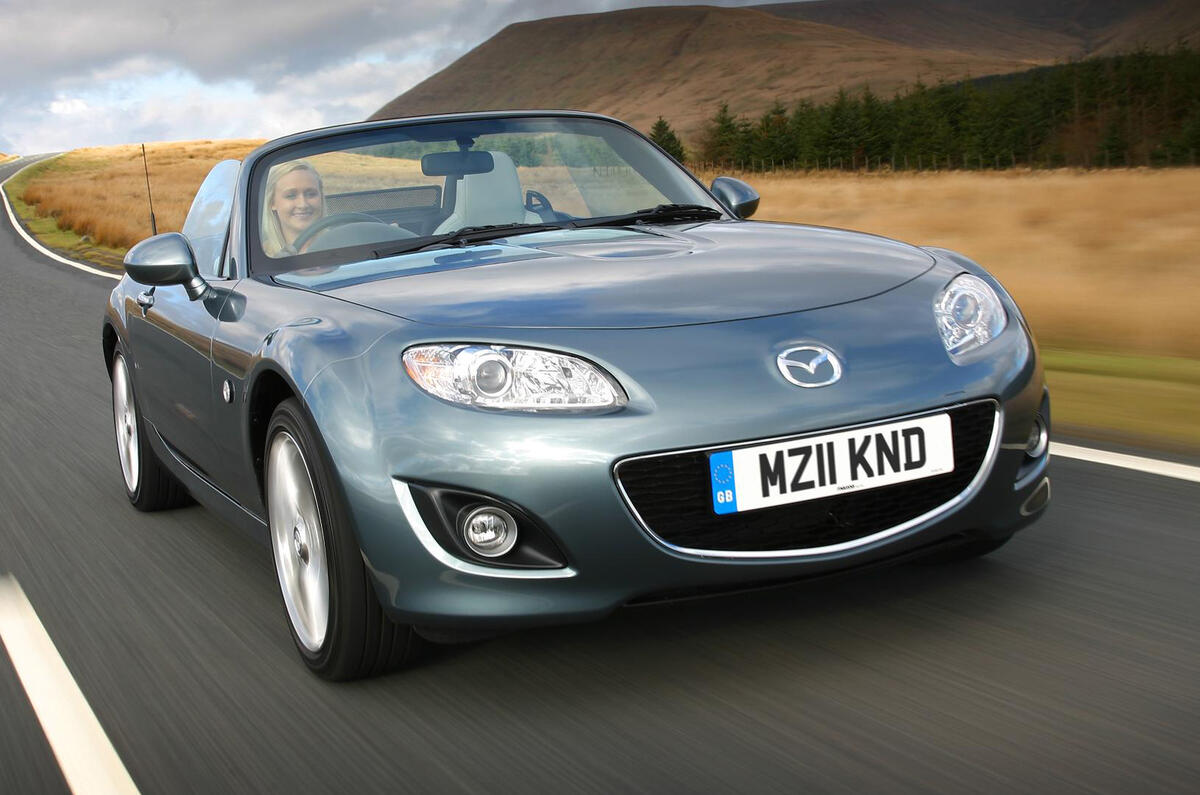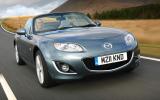The all-new Mazda MX-5 will be based on all-new steel spaceframe architecture, developed under Mazda’s Sky Activ umbrella. The rear-drive architecture is known internally as S-Platform.
Although a switch to front-drive was considered at an early stage in the project, Mazda was keen not to alienate its huge base of existing customers and invested in the new compact rear-drive platform.
The structure will help Mazda achieve a kerb weight of less than 1000kg, according to highly-placed Mazda sources. This means it will be more than 15 per cent lighter than the current lightest MX-5, the soft-top 1.8i SE model.
The MX-5 has gradually got bigger and heavier over its two generations and Mazda is keen for the model to return to its roots as a lightweight and agile two-seater, with driving fun as its main priority.
The new MX-5’s powertrains will take advantage of the car’s lightness, meaning the end for the current weighty 1.8-litre and 2.0-litre petrol engines. One Mazda engineering source has said that he would like to see the new model powered by smaller, naturally aspirated, engines, which will still offer a competitive power-to-weight ratio.
A new direct-injection 1.5-litre Sky Activ petrol unit, developing around 130bhp is expected to be the entry-level engine. Other sources say that a more powerful, turbocharged, 1.5-litre engine will also be on the menu. Lightweight SkyActiv transmissions will also be offered. Other weight saving measures will include lightweight speakers and a simple cabin storage bin instead of a glovebox.
The new MX-5 will again be available in soft-top and folding hardtop configurations, but it is not scheduled to be launched until the middle of the decade, later than the originally planned launched date of 2013.
A mildly revised version of the current MX-5 will be launched at the Geneva motor show in March to keep it as fresh as possible until the new model arrives.
















Join the debate
Add your comment
Re: Mazda MX-5 stays rear-wheel drive
Yes, the deformation of the parts closer to the occupants must be minimal. Roll forming / stretch and bending can be a very cost effective solution for some parts, when the shape get more complex is still feasible in theory but the roll forming line get longer and so slower and more expensive.
Re: Mazda MX-5 stays rear-wheel drive
The two most important criteria should be rwd and weighing under 1000kgs
Re: Mazda MX-5 stays rear-wheel drive
You may well be right, its interesting as in my line of work we use cold rolled steel in what are strength critical areas too (though the strength is more through thickness), comparitively though we have masses of spare space, weight and to a much bigger scale